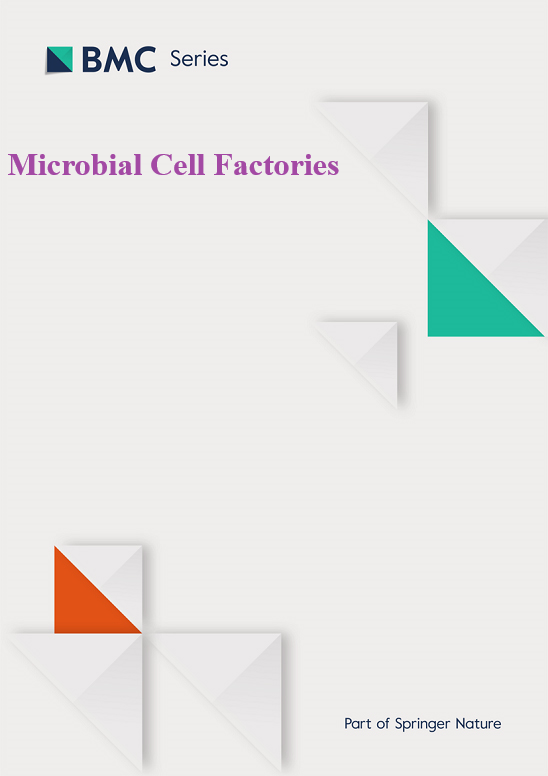Programming Bordetella pertussis lipid A to promote adjuvanticity
IF 4.3
2区 生物学
Q1 BIOTECHNOLOGY & APPLIED MICROBIOLOGY
引用次数: 0
Abstract
Bordetella pertussis is the causative agent of whooping cough or pertussis. Although both acellular (aP) and whole-cell pertussis (wP) vaccines protect against disease, the wP vaccine, which is highly reactogenic, is better at preventing colonization and transmission. Reactogenicity is mainly attributed to the lipid A moiety of B. pertussis lipooligosaccharide (LOS). Within LOS, lipid A acts as a hydrophobic anchor, engaging with TLR4-MD2 on host immune cells to initiate both MyD88-dependent and TRIF-dependent pathways, thereby influencing adaptive immune responses. Lipid A variants, such as monophosphoryl lipid A (MPLA) can also act as adjuvants. Adjuvants may overcome the shortcomings of aP vaccines. This work used lipid A modifying enzymes from other bacteria to produce an MPLA-like adjuvant strain in B. pertussis. We created B. pertussis strains with distinct lipid A modifications, which were validated using MALDI-TOF. We engineered a hexa-acylated monophosphorylated lipid A that markedly decreased human TLR4 activation and activated the TRIF pathway. The modified lipooligosaccharide (LOS) promoted IRF3 phosphorylation and type I interferon production, similar to MPLA responses. We generated three other variants with increased adjuvanticity properties and reduced endotoxicity. Pyrogenicity studies using the Monocyte Activation Test (MAT) revealed that these four lipid A variants significantly decreased the IL-6, a marker for fever, response in peripheral blood mononuclear cells (PBMCs). These findings pave the way for developing wP vaccines that are possibly less reactogenic and designing adaptable adjuvants for current vaccine formulations, advancing more effective immunization strategies against pertussis.编程百日咳杆菌脂质 A 以促进佐剂性
百日咳杆菌是百日咳或百日咳的病原体。虽然无细胞百日咳疫苗(aP)和全细胞百日咳疫苗(wP)都能预防疾病,但高致反应性的全细胞百日咳疫苗能更好地预防定植和传播。致反应性主要归因于百日咳杆菌脂寡糖(LOS)中的脂质 A 分子。在 LOS 中,脂质 A 充当疏水锚,与宿主免疫细胞上的 TLR4-MD2 结合,启动 MyD88 依赖性和 TRIF 依赖性途径,从而影响适应性免疫反应。脂质 A 的变体,如单磷脂质 A(MPLA),也可以作为佐剂。佐剂可以克服 aP 疫苗的缺点。这项研究利用来自其他细菌的脂质 A 修饰酶,在百日咳杆菌中产生了一种类似 MPLA 的佐剂菌株。我们创建了具有不同脂质 A 修饰的百日咳杆菌菌株,并使用 MALDI-TOF 对其进行了验证。我们设计了一种六烷基化的单磷酸化脂质 A,它能显著降低人类 TLR4 的活化并激活 TRIF 通路。经修饰的脂寡糖(LOS)可促进 IRF3 磷酸化和 I 型干扰素的产生,与 MPLA 反应类似。我们还生成了另外三种变体,它们具有更强的佐剂特性和更低的内毒素。使用单核细胞活化试验(MAT)进行的热原性研究表明,这四种脂质 A 变体能显著降低外周血单核细胞(PBMCs)中作为发热标志的 IL-6 的反应。这些发现为开发致反应性可能较低的 wP 疫苗以及为现有疫苗配方设计适应性强的佐剂铺平了道路,从而推进了更有效的百日咳免疫策略。
本文章由计算机程序翻译,如有差异,请以英文原文为准。
求助全文
约1分钟内获得全文
求助全文
来源期刊

Microbial Cell Factories
工程技术-生物工程与应用微生物
CiteScore
9.30
自引率
4.70%
发文量
235
审稿时长
2.3 months
期刊介绍:
Microbial Cell Factories is an open access peer-reviewed journal that covers any topic related to the development, use and investigation of microbial cells as producers of recombinant proteins and natural products, or as catalyzers of biological transformations of industrial interest. Microbial Cell Factories is the world leading, primary research journal fully focusing on Applied Microbiology.
The journal is divided into the following editorial sections:
-Metabolic engineering
-Synthetic biology
-Whole-cell biocatalysis
-Microbial regulations
-Recombinant protein production/bioprocessing
-Production of natural compounds
-Systems biology of cell factories
-Microbial production processes
-Cell-free systems
 求助内容:
求助内容: 应助结果提醒方式:
应助结果提醒方式:


